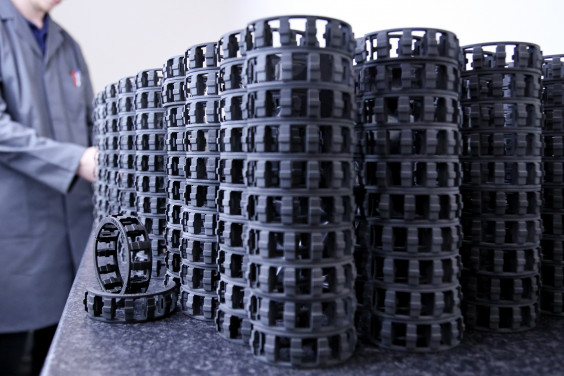In this series so far, we’ve discussed the many ways that additive manufacturing (AM) can fit into our already climate-disrupted world, as well as the many obstacles yet to be overcome. Regardless of exactly how 3D printing might help us improve efficiency and reduce waste, there’s a key phenomenon that needs to be discussed in any attempt to address ecological collapse.
Jevons paradox occurs when improved efficiency through the development of technology or implementation of government policies results in an increase in resource demand and resource use. The concept was developed in 1865 by the English economist William Stanley Jevons, who saw that, despite one’s intuition, improved efficiency in coal use led to greater coal consumption. Then, as electric lighting required 100 times less electricity for the same amount of light, the demand for lighting increased such that 1000 times the amount of electricity was used to light roads and buildings.
Blake Alcott describes the paradox using this general example:
“Suppose the average kettle becomes 10 per cent more energy-efficient at boiling water. Suppose also that the number of kettles and the amount of water boiled per kettle doesn’t change. Then the amount of energy used to boil water would fall by 10 per cent. This 10 percent of the total amount of energy previously used to boil water would be an absolute amount of saved energy, known by the technical term engineering savings. But this amount is theoretical only. In reality, less than this gets saved because, aided by lower prices both of outputs and of the energy inputs, the energy momentarily saved gets used by consumers to do other things. Unless suppliers lower supply, thus counteracting the price falls, latent consumer demand snaps up this temporarily fallow-lying energy. This new demand is called rebound consumption.”
According to Jevons, rebound consumption was even greater than the savings achieved through technological engineering. A clear example would be the idea that if steam engines had maintained the same level of efficiency in 1800, we would use much less coal today. Rebound consumption occurs in the form of direct rebound—greater fuel efficiency may lead drivers to use their vehicles more frequently at a lower cost—and indirectly—money saved on fuel can be spent on other ways to use energy.
At a global level, we’ve seen how overall increases in efficiency has led society to find new methods of and uses for production, finding new ways to use energy and resources. Ascott suggests that:
“We can measure this as an increase in the ratio of the sum of the world’s gross domestic product (GDP) to physically-measured inputs like worked hours, energy, fresh water or metals like copper, iron or rare earths. But has the increase in this efficiency ratio been accompanied, globally, by a decrease in amounts of energy used, people working or minerals mined? No. In fact, the big empirical picture shows that rebounds are at least 100 per cent. Interestingly, for labour-hours, no historian or economist claims anything but that rebound is greater than 100 per cent: higher productivity has meant economic growth and more jobs.”
For this reason, we see fossil fuel use increase as nations industrialize, which results in increased greenhouse gas emissions and overall resource use and, in turn, the climate crises and biodiversity collapse we are experiencing.
Though consumer and industrial uses of energy and materials have different dynamics, early indications of efficiencies achieved by cloud computing indicate that Jevons paradox is being exhibited by adoption of the technology. Particularly if AM is able to achieve throughput high enough to supplant other mass manufacturing techniques, it’s possible that any efficiency gains achieved will lead to an increase in production that compensates for any material or energy use attained.

New 3D printing technologies are enabling large batch production. Image courtesy of Bowmans International.
To address Jevons paradox, there is the possibility of imposing an ecotax that raises the costs of an activity even when it becomes more efficient. However, an economic disincentive still maintains some of the uncertainty associated with relying on improved efficiency, particularly if wealthy parties are willing to pay the price if it means greater resource use. A more fixed solution would be to institute legal caps on energy use and resources mined and consumed.
Subscribe to Our Email Newsletter
Stay up-to-date on all the latest news from the 3D printing industry and receive information and offers from third party vendors.
You May Also Like
Precision at the Microscale: UK Researchers Advance Medical Devices with BMF’s 3D Printing Tech
University of Nottingham researchers are using Boston Micro Fabrication‘s (BMF) 3D printing technology to develop medical devices that improve compatibility with human tissue. Funded by a UK grant, this project...
3D Printing Webinar and Event Roundup: April 21, 2024
It’s another busy week of webinars and events, starting with Hannover Messe in Germany and continuing with Metalcasting Congress, Chinaplas, TechBlick’s Innovation Festival, and more. Stratasys continues its advanced training...
3D Printing Webinar and Event Roundup: March 17, 2024
It’s another busy week of webinars and events, including SALMED 2024 and AM Forum in Berlin. Stratasys continues its in-person training and is offering two webinars, ASTM is holding a...
3D Printed Micro Antenna is 15% Smaller and 6X Lighter
Horizon Microtechnologies has achieved success in creating a high-frequency D-Band horn antenna through micro 3D printing. However, this achievement did not rely solely on 3D printing; it involved a combination...






























